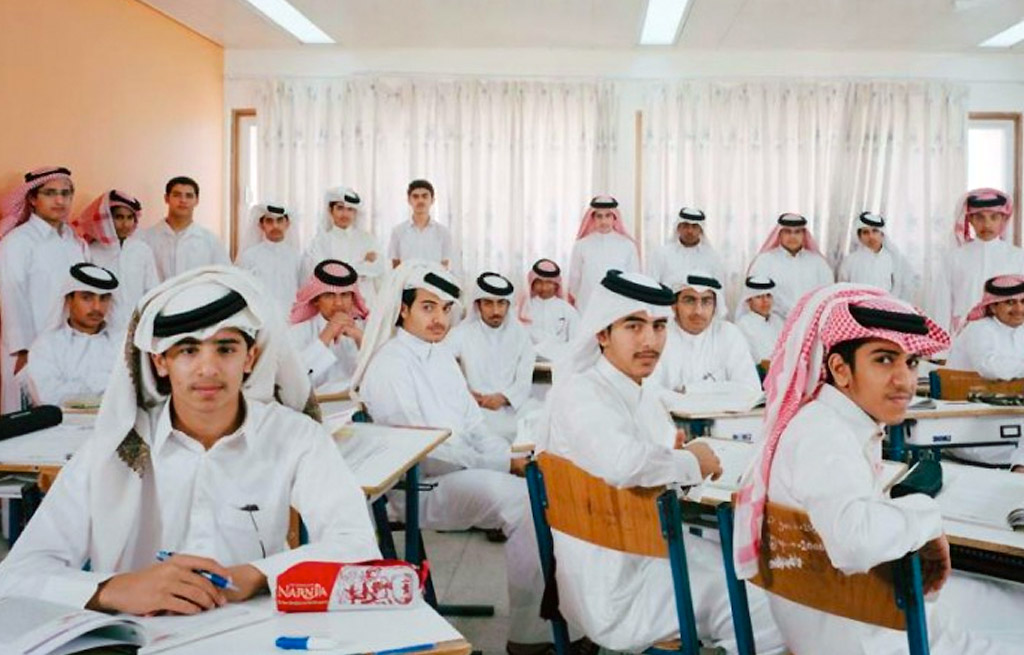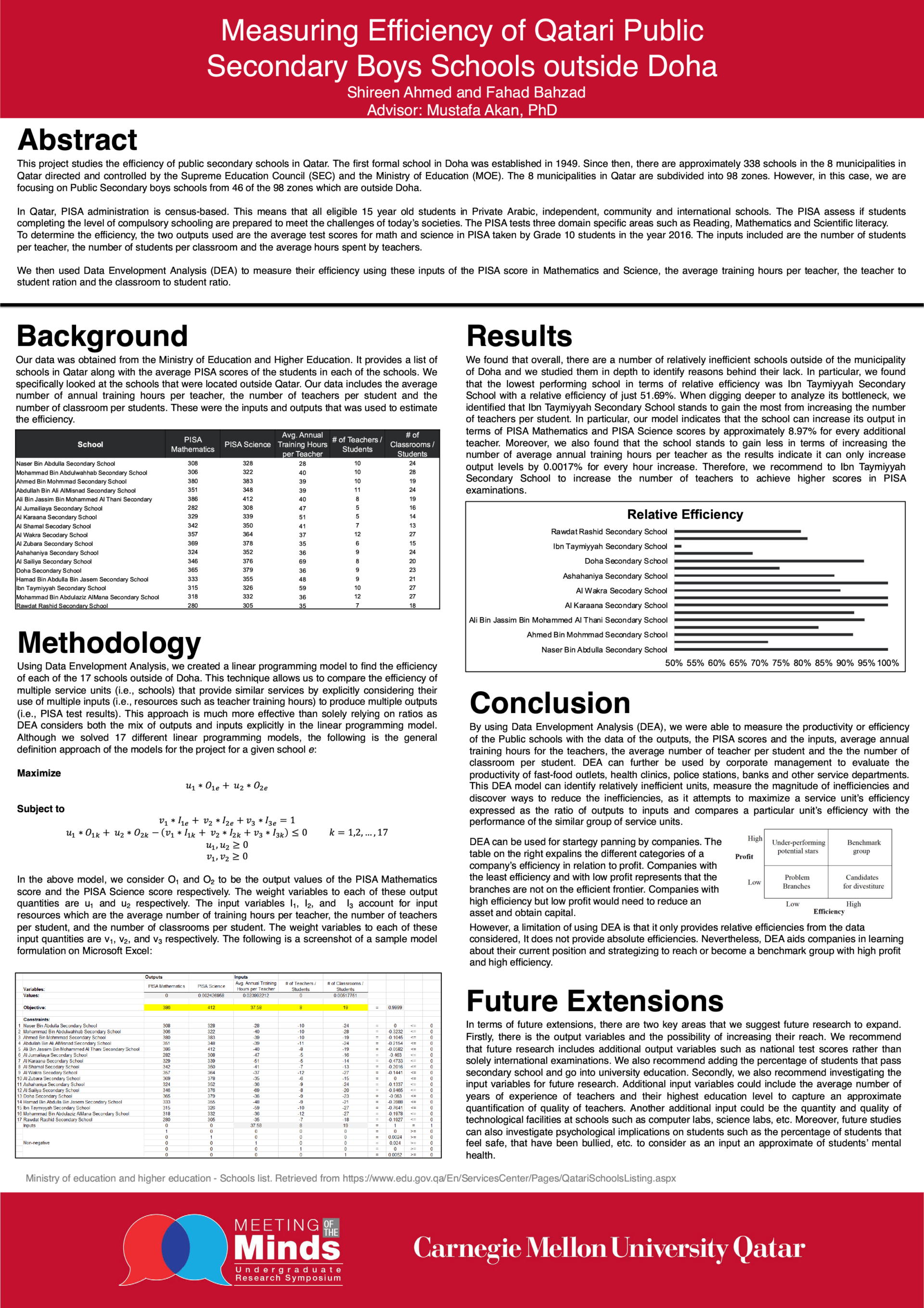This project studies the efficiency of public secondary schools in Qatar. The first formal school in Doha was established in 1949. Since then, there are approximately 338 schools in the 8 municipalities in Qatar directed and controlled by the Supreme Education Council (SEC) and the Ministry of Education (MOE). The 8 municipalities in Qatar are subdivided into 98 zones. However, in this case, we are focusing on Public Secondary boys schools from 46 of the 98 zones which are outside Doha.
In Qatar, PISA administration is census-based. This means that all eligible 15 year old students in Private Arabic, independent, community and international schools. The PISA assess if students completing the level of compulsory schooling are prepared to meet the challenges of today’s societies. The PISA tests three domain specific areas such as Reading, Mathematics and Scientific literacy.
To determine the efficiency, the two outputs used are the average test scores for math and science in PISA taken by Grade 10 students in the year 2016. The inputs included are the number of students per teacher, the number of students per classroom and the average hours spent by teachers.
We then used Data Envelopment Analysis (DEA) to measure their efficiency using these inputs of the PISA score in Mathematics and Science, the average training hours per teacher, the teacher to student ration and the classroom to student ratio.



